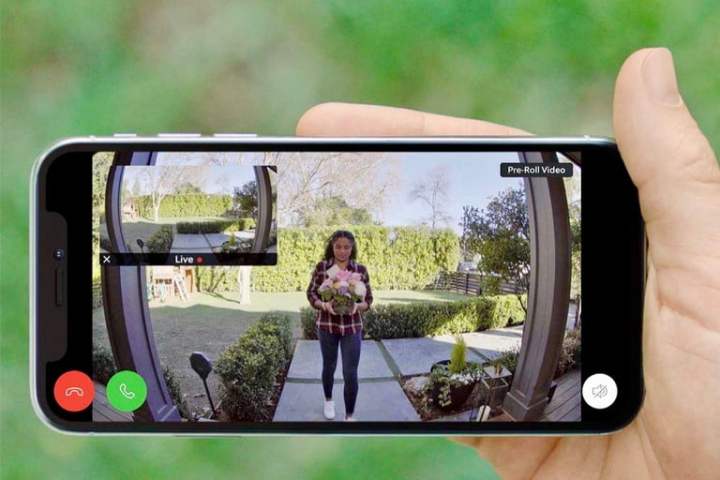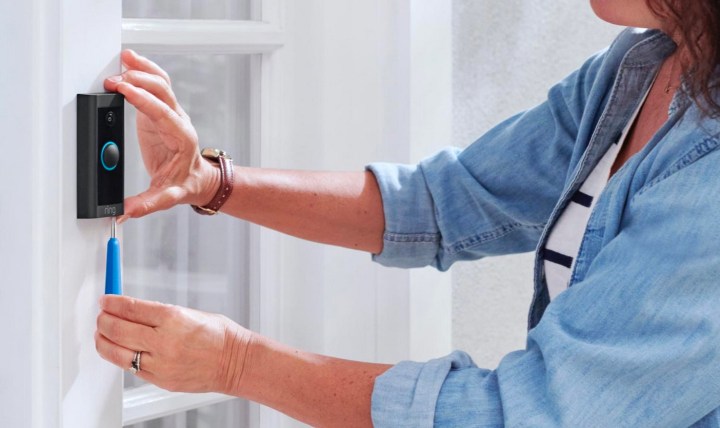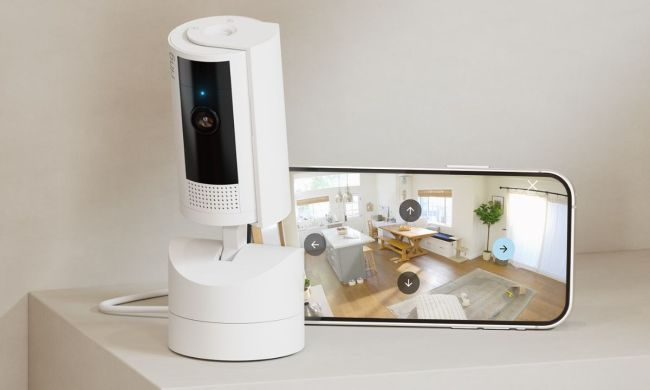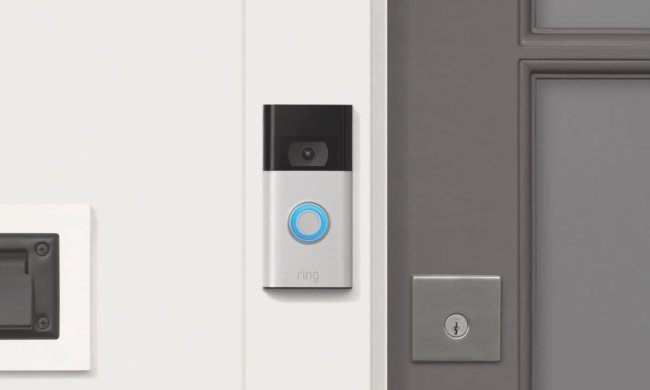Ring and Google both have some of the best video doorbells on the market — but which is the right choice for you? We’re going over all the details between these two video doorbell options, what their models look like, and which we think is the best pick for consumers.
Are you shopping for a video doorbell for Black Friday? That’s a good idea, especially if you’re looking to save. Ring doorbells in particular are likely to be discounted as they are an Amazon brand. But you’ll need to know where to look first: Start with our guide on the best Black Friday Ring Doorbell deals.
Design and variety

Google’s Nest Doorbells come in two options: A battery-powered version that can be placed anywhere and a larger, wired version that needs to be connected to a home’s electricity to work. Outside of this, both have very similar designs, a simple vertical shape that makes the actual doorbell obvious. The battery version comes in several different colors, while the wired version is only available in black.
Amazon’s Ring brand, on the other hand, has a much more varied product line, which includes the Video Doorbell Pro, the Doorbell 3 and 4, the Doorbell Pro 2, the Doorbell Elite, and a new 2020 version of the standard Video Doorbell. If you want choices, Ring is the brand for you. Its designs vary a bit from model to model, but they tend to be a bit more blocky than the Nest Doorbells, and will certainly stand out more on your porch.
Battery

The wired version of the Nest Doorbell may need more work to set up, but you never have to worry about recharging the battery. Plus, wired doorbells can use the chime you already have installed. The battery version, meanwhile, allows you to place the doorbell wherever it’s most convenient and gets the best views for the video camera, while also allowing you to customize the new chime.
Ring also offers wired and battery video doorbells, although with a greater number of options in each category. Both models allow you to wire in the battery doorbell if you prefer.
Both Ring and Nest batteries will last for a certain amount of time depending on how often they are triggered — usually at least several months before they need a recharge, although if your cam is facing a busy street it could be far more often than that. Ring in particular has done an excellent job of designing batteries that quickly slide out, although this can vary a bit based on the model, while Google requires you to detach the doorbell front section entirely.
Video camera

The video cam is one of the most important parts of a video doorbell, so let’s take a moment to look at the specs. Both Google and Ring have 2020 versions of their standard doorbell out, so this is a great place to start.
Nest’s Doorbell uses an HD, 960 x 1280 resolution cam with a vertical orientation that’s designed to focus on the full view of your porch to clearly see all the details on people and packages alike. It comes with both motion and proximity sensors, and up to 10 feet of night vision.
Ring’s latest doorbell offers a more traditional 155-degree (90-degree vertical) cam at 1080p HD resolution. Motion sensors and night vision are also included.
There’s not a lot of differentiation here, but the Nest Doorbell’s 4:3 aspect ratio is better for taking a closer look right in front of your door, while the Ring Doorbell is better for a broader security sweep. Higher-tier Ring video doorbells also offer increased resolution (the Pro 2, for example, offers UHD video), while the older wired Nest Doorbell has improved resolution as well.
Audio quality
Both brands offer video doorbells that include two-way audio communications that you can open while looking at a livestream to initiate dialogue. They’re small, but suitable for brief communication when necessary. Although, you won’t be able to record any audio (state privacy laws have a say in this). There’s not much difference to worry about in this category.
Installation

Both types of video doorbells have similar installation, depending on whether you are using a battery or wired version. Both offer detailed instructions and walkthrough videos that make installing largely painless from a DIY perspective, although if wiring is involved you should have at least some electrical experience. We think Google’s videos are a bit more friendly for absolute newcomers, but this is another area where there isn’t much difference.
Smart features and voice assistants

Both brands offer video doorbells with motion detection zones and the ability to identify certain objects, but Google’s A.I. technology helps make the Nest Doorbells a lot smarter in this regard. Ring’s doorbells offer the ability to recognize people and send rich-text notifications, but Google’s battery-powered doorbell can identify people, vehicles, animals, and packages, and send tailored text alerts guessing which triggered the doorbell. It can even track familiar faces with a paid subscription.
We should also mention the app modes used for broad control. Modes in the Ring app can be applied to all Ring devices in your home. They include both a Home Mode for activating outdoor cams and an Away Mode that will activate both indoor and outdoor cams and sensors. Google’s Home and Nest apps also have Home and Away functions, but while they can be used manually Google devices can also switch between them based on presence detectors in certain devices. Home and Away modes are useful if you have several different Ring or Nest devices and want to control them all at once.
Video storage and sharing

It’s also important to talk about video storage, as the two brands differ in how they handle it. Google offers the ability to hold up to three hours of event history for free at any given time. After the three hours are used, you’ll have to delete footage. Buy the Nest Aware subscription ($6 per month, and this allows “event” video clips to last for 30 days regardless of length). Ring allows you to keep photos for up to seven days for free but doesn’t allow for any free video clip storage — for that, you’ll need a Ring Protect subscription ($3 per month), which allows you to save video for up to 30-60 days based on the details.
Finally, if you like using voice assistants or pairing your doorbell with a smart display like a Nest Hub Max or Echo Show, note that the Ring video doorbells are compatible with Alexa, while the Nest doorbells only work with
Pricing and availability
For pricing and availability on Google Nest Video Doorbells, you can check here.
For pricing and availability on Ring Video Doorbells, you can check here.
Google’s two Nest Doorbells vary in price from $179 (battery) to $229 (wired).
Ring, on the other hand, has a much wider range of prices and equipment packages, making it easier to save money or to spend a lot more on a doorbell with extra resolution capabilities: Its models range from $59 for the base wired version to $349 for the business-friendly Elite model. Thanks in part to its connection with Amazon, there are also a variety of bundles that you can find, including bundling Ring with other smart devices or with additional Ring products. Bundles vary and can include:
- Bundling a Ring Video Doorbell with another cam, like the Ring Indoor Cam, to get both an indoor and outdoor view.
- Deluxe bundles that combine a Video Doorbell with a series of floodlight security cams for complete exterior coverage.
- Bundles with an additional chime component to set up a new door chime inside your home.
There is also a rotating list of Ring “Offers” to keep an eye on for current discounts. The Nest Video Doorbells, by contrast, are only available as single product purchases so far.
Conclusion: Ring has the variety, but Nest’s quality is hard to beat
Ring’s variety is a serious advantage, especially if you are looking to save or want a video doorbell for commercial purposes. But Google’s Nest Doorbells have quality features that are hard to beat, including better object identification and a very easy installation process. It’s also hard to beat that three hours of free video footage history, whereas Ring requires a subscription fee to have a video history at all.



